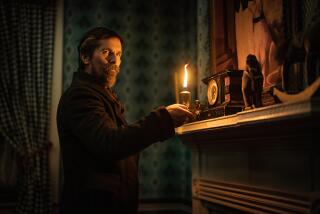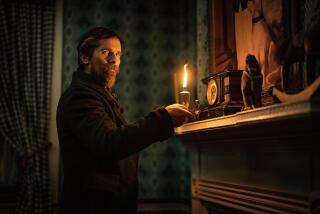Looking back at Edgar Allan Poe on the anniversary of his death
Today in literary history: On Oct. 7, 1849, Edgar Allan Poe died at the age of 40 in Baltimore, four days after being discovered at a polling place “in great distress.” Poe was in many ways the first “modern” writer, not just in his themes, but also in the way he lived: always scrambling for money, he was the first American writer to live entirely by his pen.
Although we remember him now primarily for his poetry and fiction (“The Raven,” “Annabel Lee,” “The Tell-Tale Heart,” “The Cask of Amontillado”), Poe was best known in his time as an editor and a critic, called “Tomahawk Man” for the cutting quality of his reviews.
He saved his most effusive contempt for the Transcendentalists, dismissing them as “Frog-Pondians” and engaging, throughout the 1840s, in a series of sorties against the poet Henry Wadsworth Longfellow, who he saw as derivative or worse; these efforts were later called the “Longfellow War.”
Over the weekend in Boston — the city where he was born and for which he maintained an enduring bitterness — a statue of Poe was dedicated with its back turned toward the Frog Pond in the Boston Common, as if in honor of these enmities.
“The fact of the matter,” Poe wrote in his essay “Mr. Longfellow and Other Plagiarists,” “is, that the friends of Mr. Longfellow, so far from undertaking to talk about my ‘carping littleness’ in charging Mr. Longfellow with imitation, should have given me credit, under the circumstances, for great moderation in charging him with imitation alone. Had I accused him, in loud terms, of manifest and continuous plagiarism, I should but have echoed the sentiment of every man of letters in the land beyond the immediate influence of the Longfellow coterie.”
Longfellow, of course, had the last word: “My works seemed to give him much trouble, first and last,” he commented after Poe’s death to the writer William Winter; “but Mr. Poe is dead and gone, and I am alive and still writing, and that is the end of the matter. I never answered Mr. Poe’s attacks; and I would advise you now, at the outset of your literary life, never to take notice of any attacks that may be made upon you. Let them all pass.”
And yet, Poe was correct that posterity would not be kind to Longfellow; poems such as “The Song of Hiawatha” or “The Wreck of the Hesperus” now read like little more than doggerel, stereotypical, rhythmically simple, linguistically overwrought.
Not so Poe’s authentic gothic weirdness, without which a lot of contemporary literature would not exist. He famously invented the detective story with “The Murders at the Rue Morgue” (1841) and, later, “The Mystery of Marie Roget” and “The Purloined Letter,” and also dabbled in what we might call proto-science fiction with “The Balloon-Hoax” and “The Unparalleled Adventure of One Hans Pfaall.”
In his work, he embodies that peculiarly American tension between the popular and the literary, between what happens on the surface and what goes on underneath.
When I think of Poe, however, it is of Poe the scrabbler, the working writer, dying — 165 years ago today — disoriented and alone in a city where he no longer lived.
Twitter: @davidulin
More to Read
Sign up for our Book Club newsletter
Get the latest news, events and more from the Los Angeles Times Book Club, and help us get L.A. reading and talking.
You may occasionally receive promotional content from the Los Angeles Times.







